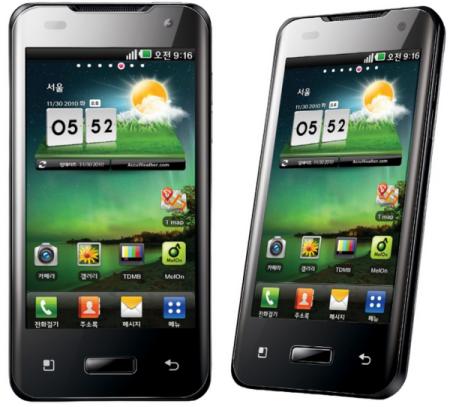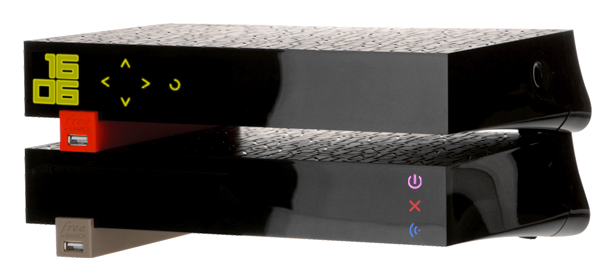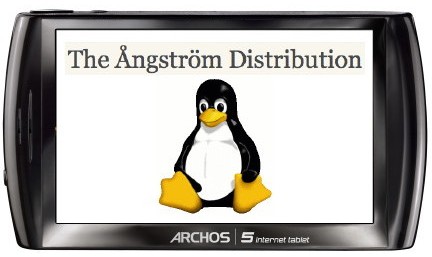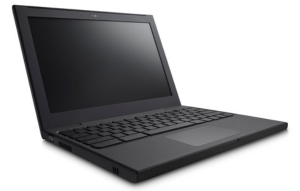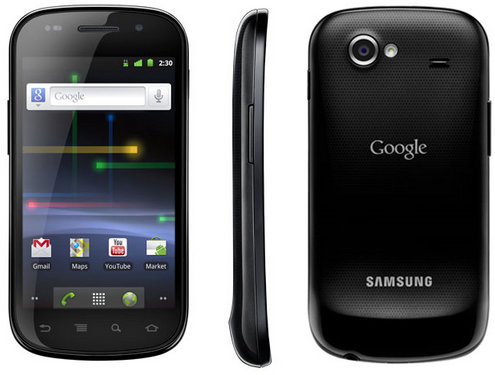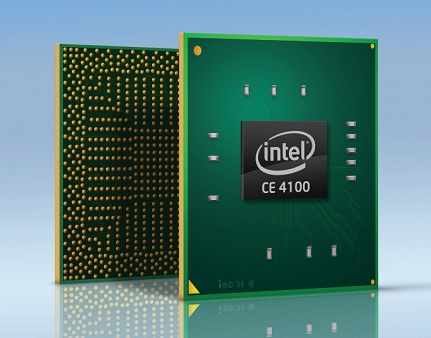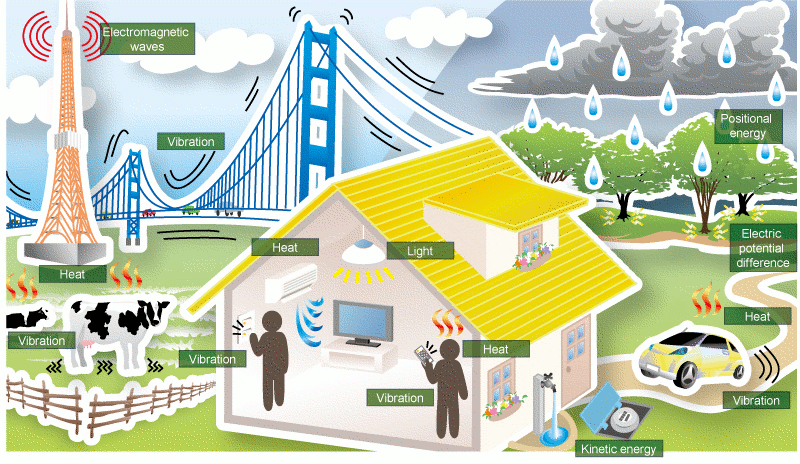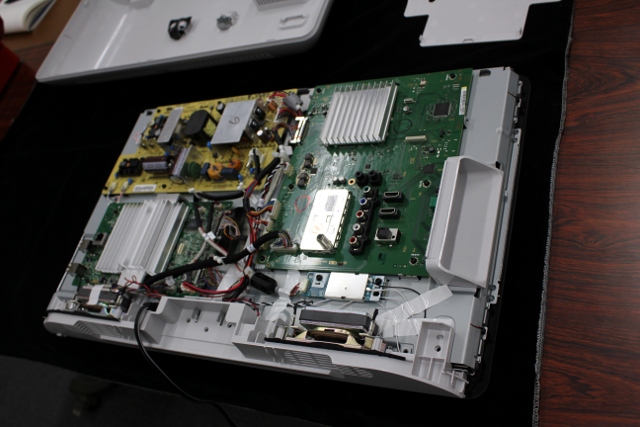LG has just introduced the Optimus 2X (codenamed the LG Star), the first smartphone to run a dual-core processor namely Nvidia Tegra 2 @ 1GHz. The device will be initially available in Korea (Model: LG-SU660) in January 2011, and later in the year in Europe, then the rest of Asia (Model: LG-P990). LG Optimus 2X will be shipped with Android 2.2 upgradeable to Android 2.3 (Gingerbread). The phone features a 4-inch WVGA screen, 8GB of internal memory, microSD support (up to 32GB), HDMI output, Digital Multimedia Broadcasting (DMB), DLNA support, an accelerometer, a gyro sensor, 1080p MPEG-4/H.264 playback and recording and finally 2 cameras: an 8 megapixel back camera plus a 1.3 megapixel front camera for video calls. Please see the video below where the Optimus 2X is compared to the iPhone 4 and the Samsung Galaxy S. The LG Star is really the clear winner in terms of performance. […]
Freebox Revolution Set-Top Box: Internet, TV, VoIP, Mobile and Gaming
Free (Iliad) has just announced the Freedom v6 Révolution on the 14th of December 2010. This solution that offers 28 Mbps internet access, digital television (IPTV/DVB), telephony (DECT, VoIP, Mobile…), Network Access Storage (NAS) and Gaming is actually based on two boxes designed by Philippe Starck: Freebox server: Handles networking (ADSL 2+ /wifi), NAS, telephony… Freebox player: Handles multimedia functions with the blu-ray player, digital television support… Free also released the technical specifications for both devices: Technical Specification of Freebox Server ADSL / ADSL2+ ANSI T1 413 / ITU G.992.1, G.992.3, G.992.5 Annex A 4 Ethernet ports 10 / 100 / 1000 Base-T SFP Port 2 USB 2.0 Ports e-SATA Port Stereo audio input/output with integrated speakers FXS Port (Telephony) WiFi 802.11b/g/n 3×3 450 Mbps 2.4 Ghz Base Station DECT CAT I/Q Internal 250 GB Hard Disk ARM9 Processor @ 1.2GHz with 512 MB RAM Noise < 37dB (while HDD […]
GPL Source code and SDE for Archos Gen8 Devices
Right at the end of November, Archos released the first version of their Android 2.2 firmware (2.0.54). They now have also released the GPL code for this firmware. http://www.archos.com/support/download/software/sources/gen8-gpl-froyo.tgz In this package, you’ll find the following: Linux Kernel 2.6.29 buildroot – Set of tools to generate the cross-compilation toolchain, the kernel and the root file system A directory called “external” with the following libraries, tools and drivers: alsa-lib – Audio library blktrace – Driver debugging tool elfcopy – Tool to generate executable binaries grub – Bootloader iptables – Firewall Tool liblzo – LZO Compression Library webkit – Web Browser Engine alsa-utils – Audio Tools BlueZ – Bluetooth Protocol Stack elfutils – Tool to manipulate executable binaries hostapd – For Wifi Authentication jdiff – Java Code Analyzer openvpn – VPN Client/Server wpa_supplicant – Wifi tools for WPA/WPA2 bison – Parser Generator dbus – Libray and daemon for IPC (InterProcess Communication) genext2fs […]
Google Chrome Notebook Cr-48 and Chrome OS Update
After unveiling Google Nexus S and Android 2.3, Google lifted the lid on its reference notebook codenamed “Cr-48″ and provided updates about Chrome OS. This notebook features a 12.1” monitor and runs Chrome OS on an Intel platform. The Cr-48 Chrome Notebook is only designed for Chrome OS pilot program and will be distributed free of charge to selected organization and users in the United States. Here’s an excerpt from Google Chrome OS website: Each participant in the Pilot program will receive a Cr-48 Chrome notebook; in return, we’ll expect you to use it regularly and send us detailed feedback. Sound interesting? Please note: Chrome OS is for people who live on the web. It runs web-based applications, not legacy PC software. The Pilot program is not for the faint of heart. Things might not always work just right. The Pilot program is open to individuals, businesses, schools, non-profits and developers based […]
Google Nexus S and Android 2.3 (GingerBread) Unveiled
After much speculation, Google and Samsung finally lifted the lid on the Nexus S, the successor of Nexus One. It will be available for sale (unlocked) in the US on the 16th of December (Best Buy – 529 USD) and the UK on the 20th of December (Carphone Warehouse – 549.95 GBP) Samsung/Google Nexus S runs Android 2.3 (gingerbread) on a processor based on cortex A8 (Hummingbird) clocked at 1 GHz, with 512 MB RAM, 16 GB internal storage. The full specs are available on Google Nexus S page. One interesting new feature is Near Field Communications (NFC) that will allow the device to read RFIDs (e.g. for Interactive Advertising) and behave like a contact less card. So the phone might be used to make payments in the future and replace your credit/debit card. It could also be used as a contactless stored value smart card similar to the Octopus […]
Resources for Intel Atom CE41xx: CE4100, CE4130, CE4150
Intel Atom CE4100 (Codename: Sodaville) is a System-on-Chip (SoC) media processor designed for use in set-top boxes, media player and internet TVs such as D-Link Boxee Box and Sony NSX-24GT1 Google TV. The Atom CE4100 is a 45nm-manufactured SoC running at 1.2 GHz. The Atom CE4100 supports hardware decode of up to two 1080p video streams (H.264, VC-1, MPEG-4/Divx..) and advanced 3-D graphics. It is also able to handle Adobe Flash 10 and 3D gaming as well. For further details about the processor, please refer to Intel Atom CE4100 Product Brief. [ad#Google Adsense – Wide Banner] The Atom CE4100 custom linux kernel and SDK are not publicly available, and you’ll need to contact an Intel FAE if you want to develop on the platform. However, some development tools for Atom (i.e The Intel(R) Embedded Software Development Tool Suite for Intel(R) Atom(TM) Processor) including a C++ compiler (GCC compatible), performance primitives […]
Battery-less embedded devices with Power Harvesting
Embedded systems without batteries nor connection to the mains, is that possible ? The answer is Yes!. For ultra low-power devices, Power Harvesting (aka Energy Harvesting) may be an option. By harvesting the energy from vibration from people walking or cars crossing bridges, automobile heat, broadcasting waves, light, wind, etc.. it is possible to capture enough energy to power very small devices such as wearable electronics and wireless sensor networks. The illustration below show the multitudes of tiny sources of energy around us. Please refer to the table below to see what amount of energy might be harvested depending on the source. Energy Source Examples Energy per unit area Vibration Walking, motors, bridges 10-3 to 10-4 W/cm2 Light Lighting, sunlight inside rooms 10-4 W/cm2 Heat Body heat, vehicle waste heat 10-5 W/cm2 Electromagnetic waves Broadcasting, wireless LAN emissions 10-6 W/cm2 The two main advantages of devices that can be powered […]
Sony NSX-24GT1 Google TV Tear Down
Nikkei Electronics has recently teared down Sony Google TV as seen at IFA 2010. They used Sony NSX-24GT1, a 24″ internet HD television powered by Google TV, for this little exercise. They found three boards: Power supply board at the upper left. Main board (“Android board”) at the lower left. TV board at the right. The SoC mounted on the TV board is Renesas Electronics Corp. EMMA3TL2 (MC-10157), an image processing SoC designed for digital TVs supporting ATSC (USA), DVB (Europe) and ARIB (Japan). Finally, they disassembled the TV to access the main board. It turned out that Sony NSX-24GT1 Google TV main board is based on Intel Atom CE4100 (center) and Foxconn is the manufacturer (lower right). Eight Samsung K4B1G0846F DRAM modules are mounted on the board (Right of Atom CE4100) and since each of the DRAM has a capacity of 128 Megabytes, the total memory capacity is 1 […]


